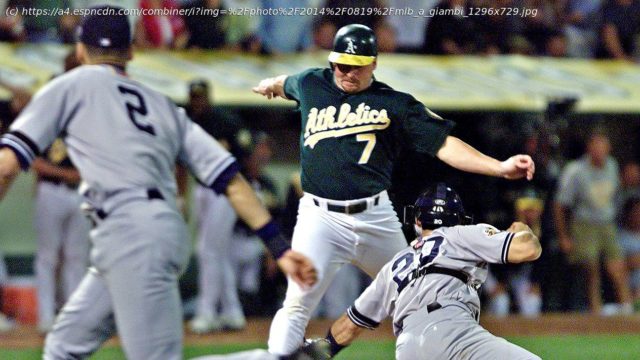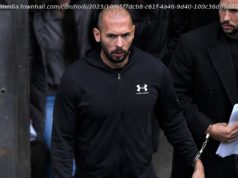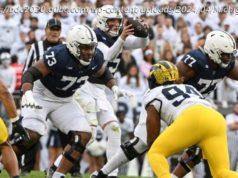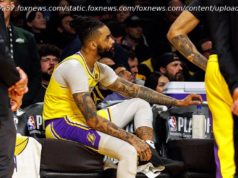Was Giambi really out? How did Jeter get there? Twenty years later, the players and coaches involved recall the new Hall of Famer’s once-in-a-lifetime play.
It is the most iconic, most brilliant play in the career of New York Yankees Hall of Fame shortstop Derek Jeter, the play that personifies his remarkable combination of athleticism, agility and, most important, awareness. It is one of the most famous plays in the history of postseason baseball, one that has been replayed hundreds of times every October for 20 years. Like many unforgettable plays, it has a nickname. It will always be known as The Flip. It occurred in the 2001 American League Division Series between the Yankees and Oakland Athletics. Oakland held a 2-0 lead in the best-of-five series but trailed 1-0 in the bottom of the seventh inning of Game 3 on Oct.13. With two outs and Jeremy Giambi on first, Terrence Long hit a hard ground ball over the first-base bag. Yankees right fielder Shane Spencer fielded it in the right-field corner but overthrew two cutoff men — second baseman Alfonso Soriano and first baseman Tino Martinez. Jeter raced across the diamond, fielded the ball on one hop in foul territory between first and home, and made a backhand flip to catcher Jorge Posada, who tagged out Giambi on a very close play at the plate. The Yankees won the game 1-0, then won the next two to advance to the American League Championship Series and ultimately the World Series. “You’ve opened up an old wound for me,” says Art Howe, then the A’s manager. “Jeter was a thorn in my side for a long time, but it was an amazing play he made. The flip was incredible, but to be in that position, I really don’t know what he was thinking. And there he is, in the perfect spot.'” What makes The Flip even more intriguing is the debate still surrounding it. Should Giambi have slid on that play? Most involved agree that he should have, and likely would have been safe. Was Giambi really out at the plate? Oakland pitcher Barry Zito, and several other A’s, said at the time that he was safe. Was Giambi told to slide by Ramon Hernandez, the on-deck circle hitter? Would Giambi have been safe if Spencer had hit one of the two cutoff men? Would Giambi have been sent home if either of the cutoff men had been hit? And what was Jeter doing all the way over on the first-base line on that play, anyway? The best part about that play, though, is that no one involved in it had ever seen it made before, or since. “I’ve never seen that play,” says then-Yankees manager Joe Torre, who has spent 60 years in the major leagues as a player, manager and executive. “I’m certainly happy the first time watching it was in Game 3 of the division series.” Howe says he had never seen that play. “And you’ll never see it again,” he says. In Game 3 of the 2001 ALDS, Derek Jeter ran across the infield to grab an errant throw that had missed the cutoff man and flipped the ball to catcher Jorge Posada for the out at home plate. Derek Jeter “I am big on preparation. I always just run through all the possible scenarios in my head before they happen. You know athletes talk about how they slow down the game, they slow down when you prepare. You know, you have a guy on second base, you’re playing shortstop and you know where you’re going to go if you go to your left or your right, you’re coming in, you know the speed of the runner, you know the different circumstances, you know which runners run hard, which don’t. You have all these checkpoints in your head. So when [Long] hit the ball down the line, it was something I had prepared for. I was in the position I was supposed to be. That’s the way I always looked at it.” Tino Martinez, Yankees first baseman,1996-2001,2005 “It’s one of those plays where it’s a sure triple as soon as it goes over the bag. It’s a double cutoff play, an automatic double-cut play on that ball down the right-field line.” Ron Washington, A’s third-base coach,1996-2006,2015-2016 “I heard they practiced that play. They probably did.” Joe Torre, Yankees manager,1998-2007 “To this day, when people talk about the play, I tell them that we work on that play in spring training, and they sort of laugh at me. There’s a reason we did work on it. You have to have someone athletic like Derek to make a decision on where the play is going to be.” Jorge Posada, Yankees catcher,1995-2011 “We practiced that play in spring training. We don’t have that play happen the whole year. It just happened to come against the A’s in the playoffs.” Jeter “My job in that situation is to be the third cutoff man. And 99.9% of the time, it’s just to redirect the throw to third base. You would assume that one of the first two cutoff men would be hit, but in that situation, he overthrew both of them. If you think about it, if he hit either one of them, Giambi would have been thrown out by about 15 feet at home. I saw it go over both of their heads. If you go back and look at the hop, it would have taken Jorge away from the plate because the throw sort of started to check up, up the line.” Art Howe, A’s manager,1996-2002 “He would have been out from here to next week at home if he had hit the cutoff man.” Martinez “I was the second cutoff man. I was the trail guy, but I stayed around the first base area in case he overthrew the first cutoff man. Shane’s got a pretty good arm. He airmailed both of us. I jumped and didn’t even have a chance to catch it. If he hits Soriano, now Soriano has to make the perfect relay throw to the plate to get him. It’s almost like it turned out in our favor that happened because a perfect relay is pretty hard these days. It almost worked out better that he airmailed both of us because Derek was in the right spot.” Shane Spencer, Yankees outfielder,1998-2002 ” [Laughing] The game was going so fast; with Mussina and [A’s starter Barry] Zito pitching really well, there was no action, so when the ball got hit down the line, [Martinez] just assumed [Paul] O’Neill [the every-day right fielder, who didn’t start against Zito, a left-hander] was out there, and the ball was going to go all the way to the wall. So I cut it off before it got to the wall. I turned around and chucked it. It was like, ‘Hey, whoa, there’s nobody there.’ It was probably one of my best throws ever. So, the one time I miss a cutoff man, because they both weren’t really in the right position, I get the overthrow and he gets the ESPY.” Mike Mussina, Yankees pitcher,2001-2008 “I ran toward [the A’s] dugout to back up the play, and looked for the ball wondering if it was going to second or going home, then I would veer one way or the other.” Torre “Winning 1-0, two outs, there’s a good chance the play will be at the plate… if there is going to be a play. We don’t care if [the batter] goes to third, you just want to keep the guy from scoring. Derek’s athleticism, and he has great instincts, made that play. You have to be in the mindset of the third-base coach. I don’t think in any instance he’s going to stay at third base. They’re going to take their shot, and rely on somebody having to make a play.” Washington “If [Spencer] had hit either one of those cutoff men, I would have stopped Jeremy at third.” Howe ” [Laughing] Knowing Wash, I don’t know if that’s a true statement.” Mussina “The weird part is, that situation comes up every 10 years, and for Derek to do it right…. We do things out of habit, I run to back up home on that play out of habit, but this was not habit. The right fielder overthrowing both cutoff men is not habit. And Derek was still there at the right time in the right place.” Torre “If you throw over one cutoff man, there’s a 50-50 chance you will throw over two of them. Spencer in right field is just going to wheel and throw, he’s just going to give it to somebody else.






